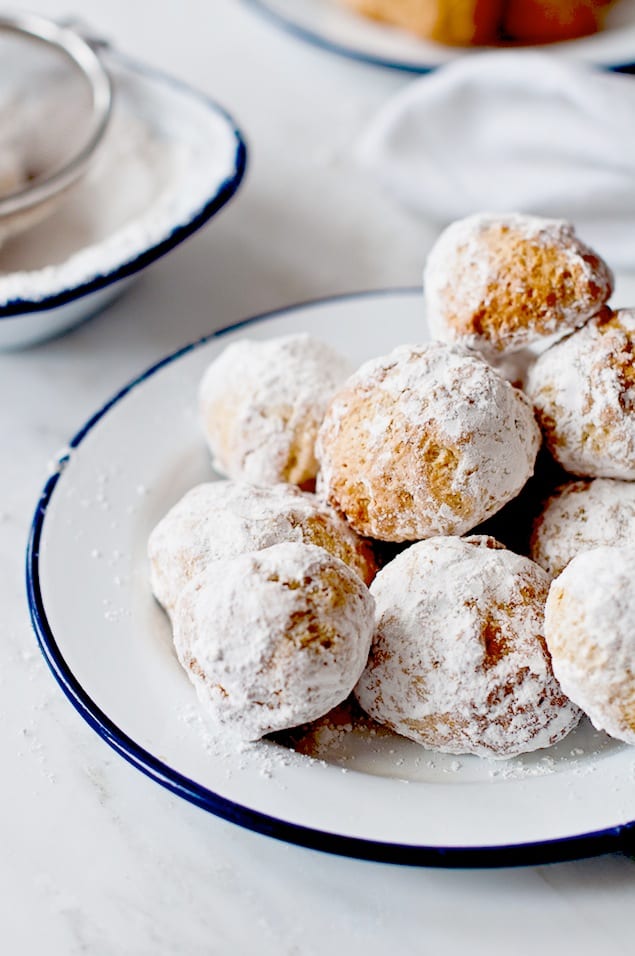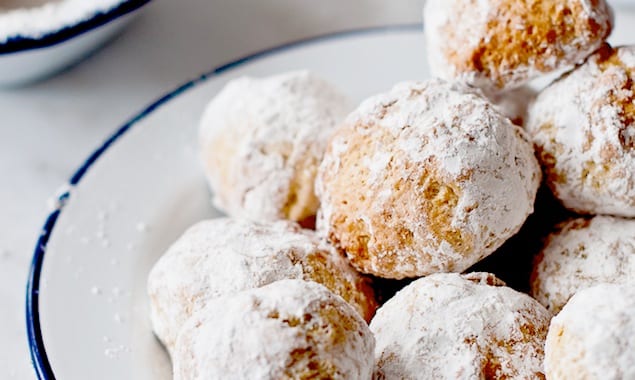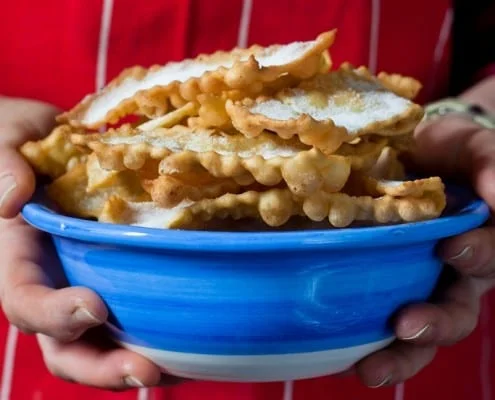Valeria Necchio graduated from the Unviersity of Gastronomic Sciences with…
Carnival is a very exciting time of the year to visit Venice. Between mid February and early March, tourists from all over the world join the locals in celebrating this ancient tradition of disguising and having fun before the dark times of Lent arrive.
By Valeria Necchio

There are many ways to take part to the feast: heading down to Piazza San Marco and admire the mysterious figures of 18th century costumers strolling around; joining one of the many parties and events taking place all over town; or simply enjoying the beauty of Venice at its liveliest, while fueling on some traditional Carnival sweets. The spirit of the Venetian Carnival is indeed an invitation to exceed and enjoy the pleasures of the senses. One of the senses being taste. Food is kept in the highest consideration, particulatly sweets, which, to make the whole thing even more sinful, are fried.
The most traditional Carnival sweets in Venice are cròstoli (thin layers of sweet dough, deep fried and covered in sugar), frìtole, and favette. Frìtole used to be made in the street by frìtoleri, artisans of the fried dough, using big skillets on a tripod over open fire. They would fry these balls of yeasted dough made of flour, eggs, sugar and dried fruit (pine nuts and raisins) in lard, and sell them still piping hot to the passers-by. Nowadays, frìtoleri have disappeared, but frìtole still populate the windows of all Venetian pastry shops and bakeries – plain or stuffed with custard, zabaione and even chocolate. As for favette, they are bite-size fried balls of plain sweet dough – as tempting and easy to eat as cherries, but way more dangerous.

Favette have always been my favourite Carnival treats, and my grandmother used to make big batches of them for me to eat at breakfast or at tea time, after school. For Shrove Tuesday this is a good, easy recipe to make to celebrate and indulge, and feel the spirit of the Venetian Carnival wherever you happen to be.
Venetian Favette
5 Stars 4 Stars 3 Stars 2 Stars 1 Star
4 from 1 review
- Author: Valeria Necchio
- Yield: 10-12 1x
Description
This recipe makes quite a few favette, but it works well sizing it down to half, too. They are traditionally (and delicious) fried, of course, but if you have troubles with deep-frying, you can try and bake them. Those in the pictures are baked and just as lovely.
Ingredients
- 6 eggs
- 6 Tbsp white granulated sugar
- 2/3 cup unsalted butter, melted
- 4 Tbsp grappa or anise licor (optional)
- 2/3 cup hot water
- 2/3 cup warm milk
- 1/2 lemon, zest and juice
- 1 Tbsp baking powder
- 4 cups all-purpose flour (about 500 gr)
- Vegetable oil or lard, for frying
- Granulated sugar or icing sugar, for dusting
Instructions
- Wishk the eggs with the sugar until eggs are light yellow and fluffy.
- Stir in the melted butter and whisk to combine.
- In a separate bowl, mix the water, milk, licor and the lemon juice and zest.
- Add the liquids to the egg mixture and stir until the mixture is well-combined.
- In a third bowl, mix the sifted flour with baking powder.
- Start spooning the flour into the wet ingredients, stirring at every addition.
- As the dough starts to form, drop the spoon and start kneading it by hand.
- Keeo adding flour until you can form a ball that holds together without being too solid – a bit sticky is fine.
- Transfer the dough over a dusted working surface.
- Devide the ball of dough into eight parts.
- Make long, thin strips of dough out of each part.
- Using a sharp knife, cut 2-inch bits of dough, roll them into balls.
- Fried Favette:
- Heat the oil in a deep skillet over medium heat.
- When hot (180°C/360°F), add a handful of favette, and fry them until deeply golden. You can do this by using a deep-frying machine, too.
- Remove them with a sieve and let them cool on kitchen towels to absorb the oil in excess. Repeat until you have finished your dough.
- When the favette have cooled down, roll them in sugar (icing or granulated).
- Baked favette:
- Preheat the oven to 180°C (360°F).
- Place the bits of dough on a baking sheet lined with parchment paper.
- Bake for 13-15 minutes.
- Remove and let cool before rolling in sugar.
- Category: Dessert
- Cuisine: Italian
Valeria Necchio graduated from the Unviersity of Gastronomic Sciences with a master's degree and immediately took off on a path connecting her passions of good food and photography. A true Italian, she likes to spend time at the weekly market, in the kitchen and behind the camera.





Thanks you.
A friend was referring to ‘Venetian Balls’ and she isn’t (as far as we know,) a cannibal. We wanted to know what she was referring to.
Favette seems to be the answer. We will try to reproduce these for her.